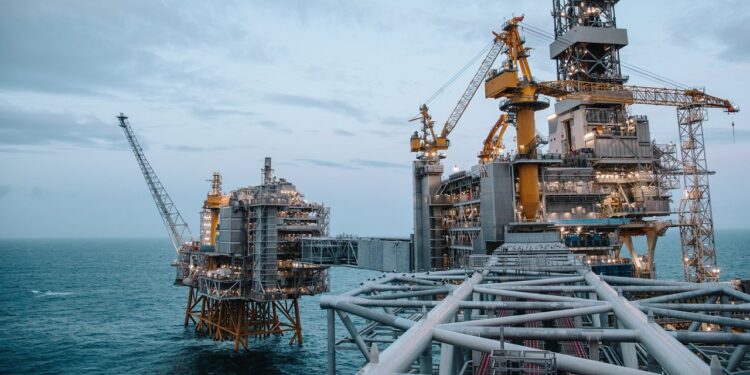Aker BP And Equinor’s North Sea Exploration Drilling Results Were Unsatisfactory
Norwegian oil and gas companies Aker BP and Equinor have explored new oil reserves near the Munin field in the North Sea. This was reported by the press service of the Norwegian Offshore Directorate (NOD).
Exploration drilling at block 30/12
The Norwegian Ocean Industry Authority (NOIA), formerly known as the Norwegian Petroleum Safety Authority (PSA), has granted Aker BP an exploration drilling permit for block 30/12 in the Norwegian sector of the North Sea in 2023. Exploration wells 30/12-3 S and 30/12-3 A were drilled 40 km south of the Oseberg field and 150 km west of Bergen. The purpose of exploration wells 30/12-3 S and 30/12-3 A was to identify oil deposits in reservoir rocks of Middle Jurassic age (Tarbert Formation).
Drilling was carried out using a semi-submersible drilling rig (SSDR) Deepsea Stavanger:
- built in 2010 at the South Korean shipyard DSME;
- length – 118.6 m;
- width – 96.7 m;
- maximum drilling depth – 10,670 m;
- owned by Odfjell Drilling; approval of conformity (AoC) from PSA was received in April 2017.
The drilling work was carried out by Equinor on behalf of Aker BP, which is the operator of production license 272 B. Aker BP and Equinor own equal shares (50%) in 272 B, issued following the Awards in predefined areas (APA) licensing round in 2018. The production license also covers the Munin field, discovered in 2011. Norwegian authorities have approved a plan of development and operation (PDO) for Munin in June 2023.
Well 30/12-3 S
- was drilled to a depth of 3663 m (3465 m below sea level);
- discovered an oil reservoir in the Tarbert Formation at intervals of 3.5 in sandstones with medium reservoir quality;
- an oil-water contact was discovered at a depth of 3110 m below sea level;
- recoverable reserves range from 0.15 to 0.55 million cm3 oe.
- according to preliminary calculations, the opening is unprofitable under current price assumptions.
Lateral well 30/12-3 A
- the drilling depth was 4520 m (3718 m below sea level),
- in the Tarbert formation, the well encountered 19 m of sandstone with poor reservoir quality,
- the well turned out to be dry.
According to NOD, the wells were not tested, but data was collected.
Earlier it became known that the exploration well 30/4-4, drilled by the Norwegian Equinor approximately 7 km north of the Martin Linge field in the North Sea and 180 km west of Bergen, also turned out to be dry.
Let us remind you that on January 16, 2024, the Norwegian Ministry of Energy summed up the results of APA-2023. Equinor became the leader in the number of licenses received – 14 as an operator, 25 as a partner. Including 18 production licenses in the North Sea, 13 in the Norwegian Sea and 8 in the Barents Sea. Then Equinor announced that it was necessary to continue active geological exploration in order to reduce the decline in offshore production. Aker BP ASA followed Equinor with 27 licenses, including 17 operator licenses, finishing in 2nd place.











